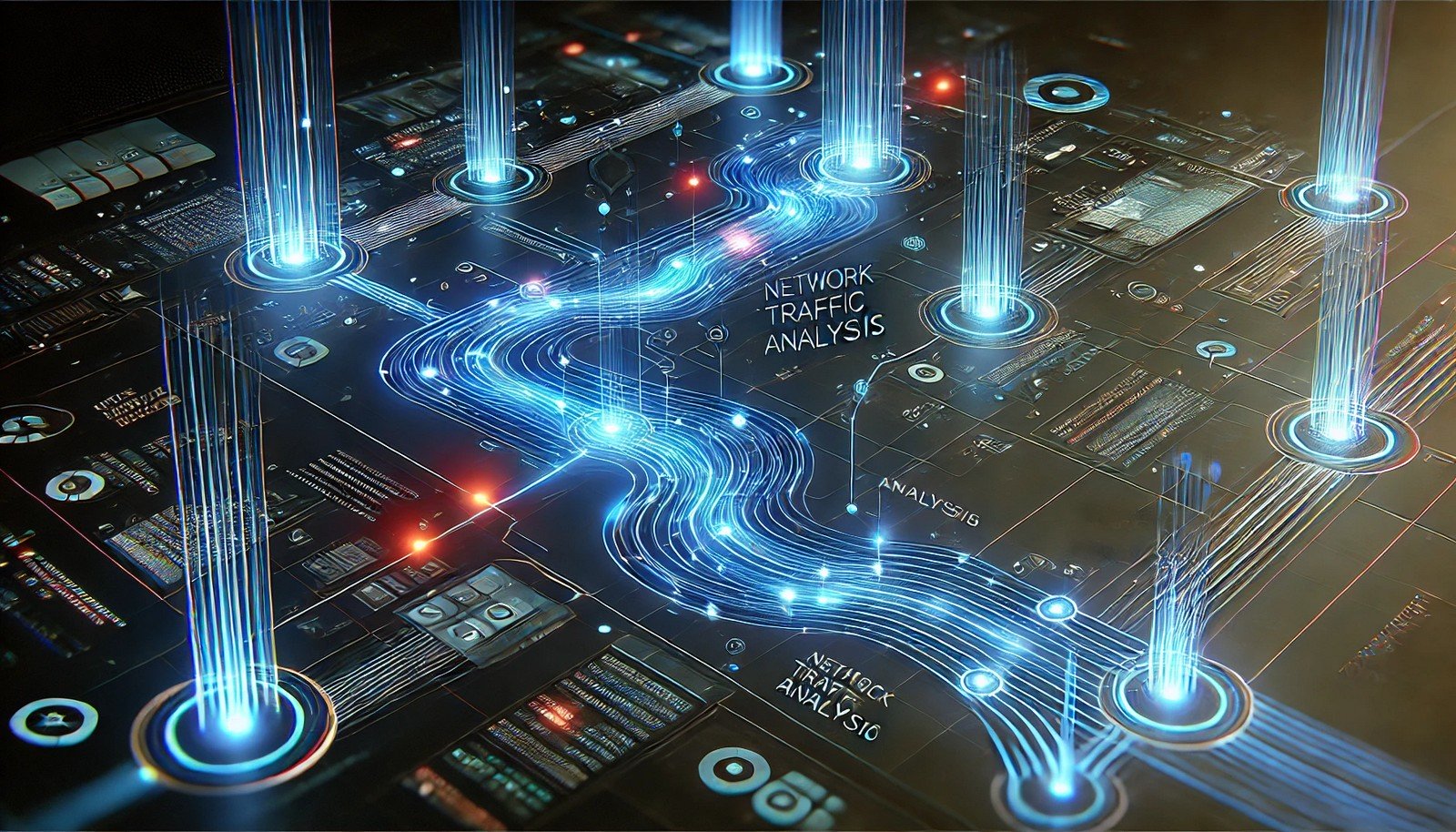Traffic Analysis
 (Representational Image | Source: Dall-E)
(Representational Image | Source: Dall-E)
Quick Navigation:
- Traffic Analysis Definition
- Traffic Analysis Explained Easy
- Traffic Analysis Origin
- Traffic Analysis Etymology
- Traffic Analysis Usage Trends
- Traffic Analysis Usage
- Traffic Analysis Examples in Context
- Traffic Analysis FAQ
- Traffic Analysis Related Words
Traffic Analysis Definition
Traffic analysis is the process of examining network traffic to identify patterns, detect anomalies, and enhance security. It is widely used in cybersecurity, performance monitoring, and data optimization. By analyzing the flow of data packets across a network, organizations can improve efficiency, detect unauthorized activities, and prevent potential threats. Techniques such as deep packet inspection, anomaly detection, and flow analysis are commonly used in traffic analysis.
Traffic Analysis Explained Easy
Imagine you're watching cars on a highway. Some cars move fast, some slow, and sometimes, traffic jams happen. If you could count the cars, see where they're going, and spot accidents before they happen, you could make the road safer and smoother. Traffic analysis does the same thing but for internet data instead of cars. It helps computers understand where data is going, how fast it moves, and if something unusual is happening, like a hacker trying to break in.
Traffic Analysis Origin
The study of traffic analysis dates back to early telecommunications and military intelligence. During wartime, intelligence agencies monitored communication patterns to predict enemy movements. With the rise of computer networking in the 20th century, traffic analysis became essential for optimizing network performance and ensuring security.
Traffic Analysis Etymology
The term "traffic analysis" is derived from "traffic," meaning the movement of vehicles, people, or data, and "analysis," meaning the detailed examination of components. It reflects the practice of studying the flow of data in networks to extract useful insights.
Traffic Analysis Usage Trends
Traffic analysis has gained prominence with the rise of cyber threats, cloud computing, and big data analytics. Organizations increasingly rely on it to detect security breaches, optimize network performance, and ensure compliance with regulatory standards. In recent years, AI-driven traffic analysis has improved automation and accuracy in threat detection.
Traffic Analysis Usage
- Formal/Technical Tagging:
- Cybersecurity
- Network Monitoring
- Data Analysis - Typical Collocations:
- "network traffic analysis"
- "real-time traffic monitoring"
- "traffic analysis tool"
- "deep packet inspection"
Traffic Analysis Examples in Context
- A security team uses traffic analysis to detect unauthorized access attempts in a corporate network.
- Internet service providers use traffic analysis to optimize bandwidth and improve service quality.
- Governments and agencies employ traffic analysis for cyber defense and surveillance against threats.
Traffic Analysis FAQ
- What is traffic analysis?
Traffic analysis is the process of monitoring and analyzing data flow in a network to identify patterns, detect anomalies, and enhance security. - Why is traffic analysis important?
It helps prevent cyberattacks, optimize network performance, and ensure compliance with security policies. - What are the main techniques used in traffic analysis?
Common techniques include deep packet inspection, flow analysis, and behavioral anomaly detection. - How is traffic analysis used in cybersecurity?
It detects suspicious activities, such as unauthorized access, malware infections, and data breaches. - Can traffic analysis impact user privacy?
Yes, if not properly regulated, traffic analysis can expose sensitive user data, raising privacy concerns. - What tools are commonly used for traffic analysis?
Popular tools include Wireshark, Snort, SolarWinds, and Cisco NetFlow Analyzer. - How does AI improve traffic analysis?
AI enhances traffic analysis by automating detection, reducing false positives, and improving real-time monitoring. - What industries use traffic analysis?
Industries like finance, telecommunications, healthcare, and government rely on traffic analysis for security and performance monitoring. - Can traffic analysis detect DDoS attacks?
Yes, it helps identify abnormal traffic spikes associated with Distributed Denial-of-Service (DDoS) attacks. - Is traffic analysis legal?
Traffic analysis is legal when conducted within privacy regulations and security policies but can be controversial if used for surveillance.
Traffic Analysis Related Words
- Categories/Topics:
- Cybersecurity
- Data Security
- Internet Monitoring
Did you know?
During World War II, British and American intelligence agencies used traffic analysis to predict enemy strategies by analyzing encrypted messages’ metadata. Even without decrypting the content, they could determine patterns that led to strategic military advantages.
PicDictionary.com is an online dictionary in pictures. If you have questions or suggestions, please reach out to us on WhatsApp or Twitter.Authors | Arjun Vishnu | @ArjunAndVishnu

I am Vishnu. I like AI, Linux, Single Board Computers, and Cloud Computing. I create the web & video content, and I also write for popular websites.
My younger brother, Arjun handles image & video editing. Together, we run a YouTube Channel that's focused on reviewing gadgets and explaining technology.



Comments powered by CComment